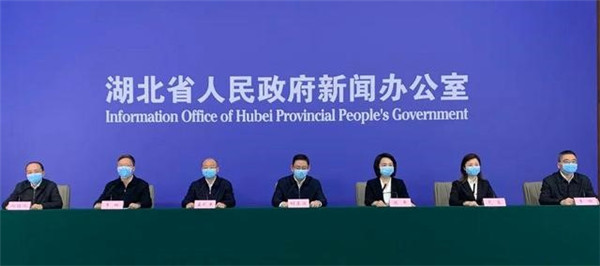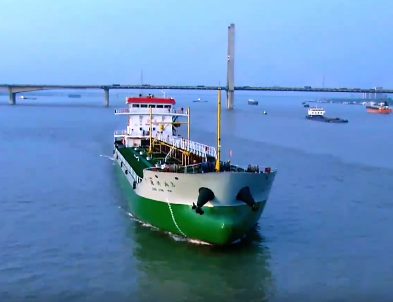Optics Valley: All large industrial firms resume output

Chen Ping (3rd from right), director of the management committee of Optics Valley, discusses the resumption of production at a news conference on April 5. [Photo/WeChat account of Optics Valley of China]
All industrial enterprises above a designated size -- those with annual revenue of 20 million yuan ($2.8 million) or more -- have returned to work and production at East Lake High-tech Development Zone in Wuhan, the capital city of Central China's Hubei province.
That's according to local officials at the zone, also known as known as Optics Valley of China, who were talking at a news conference held on April 5.
They said that as of the morning of April 5, 11,000 enterprises had resumed work and production in Optics Valley.
Among them, 100 percent of manufacturers above a designated size had returned to work, all support enterprises in the supply chain of leading businesses had returned to work -- and more than 95 percent of the commercial enterprises above a designated size, service industries above a designated size, real estate development and construction enterprises above a designated qualification were back at work.
Optics Valley is a national optoelectronic information industry base, national biological industry base and a national memory base.
As such it has employed strict epidemic prevention and controls, while resolving challenges in the resumption process.
Officials said the zone has given full play to its own advantages in advanced technology and industry.
It has made full use of intelligent temperature measuring equipment, 5G remote diagnosis platforms and novel coronavirus test kits produced by enterprises located in the zone.
Officials said it has vigorously developed epidemic prevention and control technology and digital diagnosis and treatments, as well as helped the enterprises in the zone to resume production and prevent and control the epidemic.
In addition, it also strengthened policy support -- accelerating implementation of cost reductions, rent reductions, tax reductions, financial discounts.
It has sped up allocation of scientific research funds, employment incentive funds, delayed tax payments and provided social security and provident funds and other measures to help enterprises effectively resist external risks.




